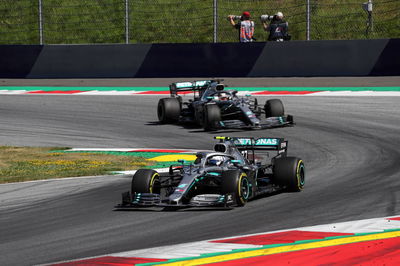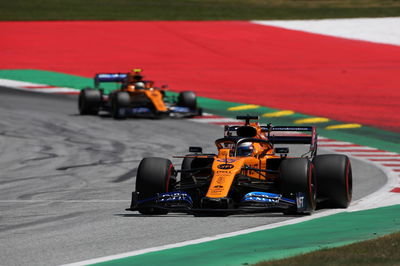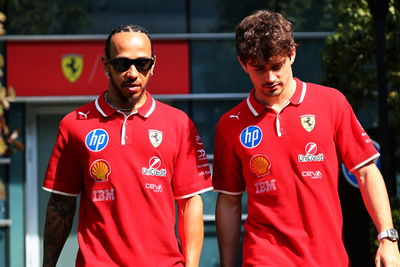Mercedes: Cooling issues a consequence of tight packaging push
Mercedes says the severe overheating issues it suffered during the Austrian Grand Prix was a direct result of its push for a compact design with its 2019 Formula 1 car.
Both Valtteri Bottas and Lewis Hamilton were forced to turn down their engines and lift and coast for up to 400 metres per lap amid unusually high temperatures in Spielberg to ensure they did not damage their power units.

Mercedes says the severe overheating issues it suffered during the Austrian Grand Prix was a direct result of its push for a compact design with its 2019 Formula 1 car.
Both Valtteri Bottas and Lewis Hamilton were forced to turn down their engines and lift and coast for up to 400 metres per lap amid unusually high temperatures in Spielberg to ensure they did not damage their power units.
Bottas salvaged a podium finish in third, while Hamilton could only manage fifth after also seeing his race hampered by front wing damage in what proved to be Mercedes’ least competitive weekend of the year so far.
Speaking in Mercedes' post-race ‘PurePitwall’ debrief video, trackside engineering director Andrew Shovlin admitted the team had been a “bit optimistic” in its cooling targets, with the reigning world champion squad sacrificing the amount of radiators on its W10 car in the search for added aerodynamic performance gains.
“Fundamentally, the car doesn’t have big enough radiators,” Shovlin explained.
“That’s something that we were a bit optimistic about how much we could get out of the cooling system - it’s underdelivered to what we hoped we could achieve.
“It’s meant that we are carrying this issue that in the very hot races we will be struggling to keep everything cool enough, principally to keep the power unit cool enough that we don’t do any damage to it.
“You can increase the amount of cooling that you get out of the car by opening up the bodywork exits, and in Austria it was 35 degrees, that actually put us at the upper end of what we could achieve just by opening the car up, so we were on limit.
“When you get to that point, you are really limited in your options,” Shovlin added. “You can start to use lift and coast, which is where the drivers get towards the end of the straight and they back off the throttle, they then brake a bit later, and you have a period where the car is just coasting into the corner.
"The engine is not doing work and you can lose a fair bit of temperature by doing that. But as you saw in the race, we were having to ask our drivers to increase that to around 400 metres per lap, and that’s why they were so compromised on performance.
“You can also turn the engine down a bit, then it will generate less heat, but you’ve got loss power and you are slower on the straights.”
Shovlin stressed Mercedes was already working on the issue prior to Austria and is confident of improving the problem going forwards.
“It was definitely a significant limitation in Austria and we are working on systems,” Shovlin said.
“We were working on them before Austria to try and improve this problem, and we should be in a better position.
“But it all really goes down to the fundamental design of the car, where in the push for very tight packaging, we have been undercooled overall.”












